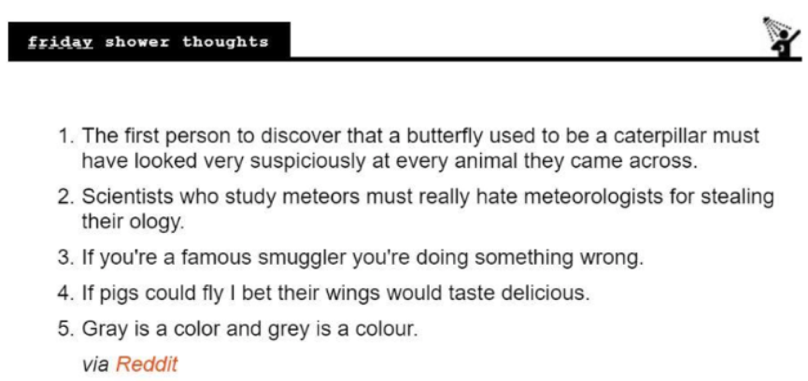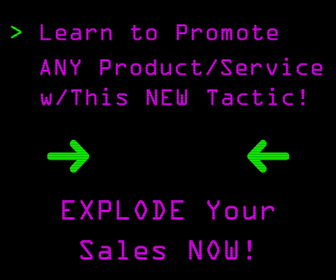 We all want to capture a reader’s attention through our content, whether it’s on a blog, website, or newsletter. Many authors are on the hunt for writing advice and figuring out the most effective way to hold an audience’s attention. It can get challenging targeting an audience which is why applying specific writing techniques should help. We also offer a free webinar training that discusses not only how to keep people coming back for more, but how all that attention can result in making a profit on the web. It’s time to rise up and take control of your site. Only you have the power to hold a reader’s attention, and you can do that by figuring out what makes them tick. Check out these useful tips that’ll make your readers stick around to learn more.
We all want to capture a reader’s attention through our content, whether it’s on a blog, website, or newsletter. Many authors are on the hunt for writing advice and figuring out the most effective way to hold an audience’s attention. It can get challenging targeting an audience which is why applying specific writing techniques should help. We also offer a free webinar training that discusses not only how to keep people coming back for more, but how all that attention can result in making a profit on the web. It’s time to rise up and take control of your site. Only you have the power to hold a reader’s attention, and you can do that by figuring out what makes them tick. Check out these useful tips that’ll make your readers stick around to learn more.
Copyblogger recommends helping your audience see what you see or in other words, use writing techniques to get your message across without losing their attention.
Help them see what you see. You might be focusing on yourself when creating messages about your business, thinking that everyone sees things the way you do. But they don’t. People won’t “hear” you, or pay attention until they perceive what you perceive. So you’ve got to make your position crystal clear — help them to see what you see, using storytelling, description, personal experiences, case histories, and anything that will put the prospect in the right position to understand your message.
Using the right type of style or language is another factor to consider when writing an article. If a writer doesn’t identify with your style why would they want to keep reading? These are the type of questions you should ask yourself when you’re writing a new article or developing a new blog.
The internet has its own style. “One style,” I hear you cry, “Aren’t there thousands?” And obviously you’re right there. The thing is, some of those styles are successful and many of them are not. The ones that generally don’t do well use complicated language, long sentence and speak in the third person. Want to know what works better? Short sentences, accessible vocabulary, first and second person (as in “I” and “You”) and making the reader feel like they’re part of the conversation.
How do make them feel like that? One way is to ask questions. Don’t you feel engaged? Okay, you might not want to overdo it. There is such a thing as too much of a good thing. Another strategy, of course, is to pretend the reader is talking with you, like I did at the beginning of this section. That’s right, only writers and prophets get to pretend people who aren’t there are talking to them. Everybody else gets locked up.
Copyblogger also argues that making your writing personal will keep an audience’s attention. You can tell a story or share something personal that perhaps your readers will identify with.
Make it personal. When you make your writing personal, you make it important. Personally interesting or perceptually meaningful information can grab attention, bring clarity, and help it slip right into your prospective client’s awareness. You don’t have to do a lot of explaining to tell someone his house (or his hair) is on fire — because it’s so personal to him. You immediately get attention.
Don’t forget about your article’s title because without a compelling title it’s not likely a reader will even click on the article in the first place. Come up with an excellent title that will make anyone who comes across your article stick around for more. Writer’s Hub offers up additional tips on how to come up with an excellent title:
Now you might be able to be more subtle about it than this. Or you can go the other way and be even more obvious. The “And you can’t believe what happened next,” or, “What happened then nearly made me cry” variety of clickbait seems quite effective. Now I truly loathe these and have stopped clicking on them out of principle (and seeing how quickly they vanished after initially appearing, so it seems have many other people). Still, the underlying idea is sound. Your title doesn’t need to just inform, it needs to intrigue. Manage that and your post will at least provoke plenty of clicks.
Similarly, My Writer’s Connection adds to Writer’s Hub thoughts on how storytelling can hold a reader captive. Stories are all about an emotional connection, and you can use that connection to your advantage (which we talk about more in a bit).
Draw them in with a story. Stories connect us in a way that facts, figures and best practices can’t. Your story doesn’t have to be long to make an emotional connection with the reader. In fact, particularly in business books, if your story runs too long, your reader will likely think, “Get to the point, already!” Keep your story short and make sure it ties in well with the point of your chapter or post.
Content Marketing Institute hits the nail on the head by discussing how thinking outside of the box by being clever and coming up with innovative ways of expressing yourself can go far.
Who says your newsletter can’t make people smile?
Scott points to The Hustle, which describes itself as “a daily email with a handful of the important stories in business, tech, and culture that you should probably know.” The Hustle makes it onto Scott’s list of favorites because, he says, “it’s brief and speaks to me in colloquial language.”
The colloquial language gives the hard facts a touch of cleverness. Here’s an example from The Hustle’s version of a story about Lyft, the on-demand ride company. The writer holds little hope that Lyft will succeed in its attempt to serve sparsely populated areas. “Will you really be able to hail a ride in the remote reaches of Alaska after a long day of ice fishing and dog-sledding?” At the end, the link to the full story on The Hustle website has this label: “Your ride will be here in 177 minutes.”
The Hustle doesn’t stick to just the facts. The editorial team throws in content that delights them. For example, Scott looks forward to the weekly section called Friday Shower Thoughts, which has all the wryness of a Steven Wright routine. Scott says, “The Hustle builds in this cadence, this expectation, so that I know what I’m going to get when I get to that section of the newsletter every Friday.”
Emotion is yet another way to get attention from your readers and Copyblogger explains why that is the case:
Use emotion. Emotion is a great way to bring clarity to your business messages while making them personal. Emotion also comes with the triple bonus of adding clarity, giving clients a reason to talk about you and your business, and triggering the circuits in the brain that activate behavior and decisions — emotion is much better at that than logic is. Emotional messages get attention.
Your Dictionary perfectly summarizes what you need to do to engage a reader and it’s all about not only believing what you write about but also being passionate about it.
The most important thing to do is to believe in what you write. Everyone can tell when someone is writing about something for which they don't feel any passion. You can feign this passion by:
Reading up on the topics and finding the most interesting, shocking things about this topic
Speaking to other people and find out why it motivates them.
What is even more real, however, is by adding a personal touch.
Making yourself vulnerable as a writer is a key to being a successful writer. Dare to expose why you are personally invested in a topic and how it has affected you. Share your story – nobody else can tell it. Be flexible about sharing some details. You do not have to tell your life story in order to get people to listen – just share some information that is interesting and revolves around a certain topic.
For example, if you were writing about ice cream, make it personalized. Writing like a robot can make even ice cream sound unappetizing. Nobody really wants to read an article that begins with, “Ice cream tastes great. Many people like it.” Try something more personal: “The first time I took a delicious, creamy morsel of frozen, chocolately ice cream into my mouth, I smiled, and proceeded to eat the whole bowl.”
Our free webinar training reveals additional tips on how to hold your readers’ attention and how you can also make money using your blog, newsletter, and other online businesses. Keeping an audience’s attention is essential to thriving on the web, and we help you uncover what it takes to do just that.
Sources: Copyblogger, Writer’s Hub, Content Marketing Institute, My Writer’s Connection, Your Dictionary
CHALLENGE Yourself to Profit!
Free Download: Build Your Profit-Generating Online Business With This Free Blueprint
Sign Up, follow the easy steps and You'll get the tactics, strategies & techniques needed to create your online profit stream. It's free!





